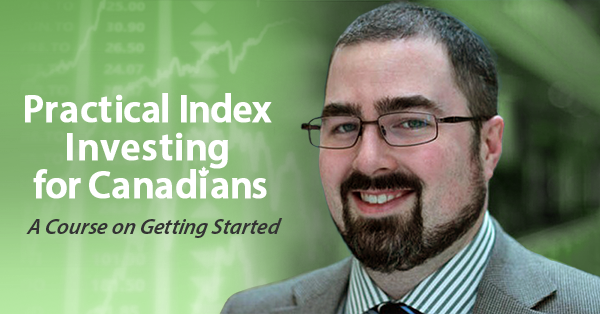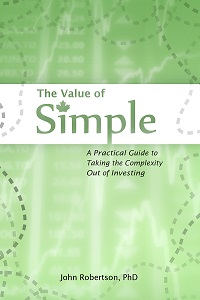The Canonical Portfolio
January 4th, 2015 by PotatoMaking the case for investing is relatively easy — investing is what gives you growth beyond your own savings, so that you can save at a reasonable rate and meet your goals. Investing through index funds is also not a hard sell: control your costs, get the market return, keep it simple. Where people sometimes get stuck though is deciding which indexes they should invest in. There are, after all, numerous indexes to follow (and funds to invest in), especially if you include sector funds.
In The Value of Simple I present a simple portfolio of just four funds1 that will meet the needs of pretty much any investor out there, with a simple rule-of-thumb to determine the main split:
- Bonds (your age less 10), e.g. 25% if you’re 35 years old (which could be for example TDB909, VAB, XBB, or XQB)
- Canadian Equities (e.g. TDB900, XIC, or VCN)
- US Equities (e.g. TDB902, XUS, VUN, or VTI)
- International Equities (e.g. TDB911, XEF, or VIU). [Or, use VXC to cover US and other International in one step — especially helpful for those who pay commissions to buy/sell ETFs]
And three equity classes, split roughly evenly with what’s left:
And that’s it. This is the Canonical Portfolio, a generally agreed-upon mix that will serve you well2,3.
However, there are lots of different points of view and thoughts on what should be in an index fund portfolio, and I had to do a fair bit of thinking on the various options when writing the book. Everyone has their own thoughts on what a passive index-based portfolio should look like (or even multiple such portfolios), and what rules of thumb should help determine the asset allocation (with many using fixed allocations and the usual “adapt as needed” disclaimer), and how fine the distinctions and allocations should be cut.
My guiding principle was that I wanted it to be easy to follow, simple, and not confuse readers while still capturing the kinds of investments that it needed to. Basically, to make it as simple as possible but no simpler. It’s also important to be able to explain in clear, simple terms why someone should pick one option over another when there are choices to be made. So in the case of covering the spectrum of Tangerine through TD e-series to Questrade I could do this: there is a clear trade-off between complexity and cost. But for asset classes beyond the basic four I could not come up with such a rule, and did not feel that the Tangerine or e-series methods were lesser portfolios for their lack of emerging markets or other asset classes4.
The top categories in investing — the unanimously agreed-upon eigenvectors of investing — are the ur-classes of stocks (risky stuff) and bonds (safe stuff). There are many sub-divisions and combinations of these, which we’ll get to, but clearly having some of each is a vital part of a decent portfolio. Precisely how much is a tricky, individual question of risk tolerance and time horizons, but the simple age-based rule-of-thumb should get you close.
Then for risky stuff the first complication is that we need to get international diversification: nearly5 everyone writing from a Canadian point-of-view agrees on this point. How much to weight the US, rest-of-world, and Canada is again tough: some home-country bias makes sense, but we are only a tiny part of the global economy. An even split is a compromise that’s easy though, so that’s what I recommended, and some Vanguard research seems to back that up as coming within a reasonable range (and still more broadly diversified than the typical Canadian investor).
The US is an obvious choice for international diversification, with the rest of the developing markets tracked by the FTSE Developed Ex-North America (formerly MSCI EAFE) index as well-accepted options. And this is indeed what I have included, and products to invest in each of these categories are available through each of the methods I cover in the book: Tangerine, TD e-series, and ETFs.
Beyond that it gets increasingly grey.
In the next post, we’ll go through a few of the other asset classes I considered mentioning in The Value of Simple but ultimately decided that they would not sufficiently serve the readers to include.
1. Or just one fund at Tangerine with the four classes contained within. And Vanguard also introduced it’s all-in-one ETFs.
2. This is not a rigid prescription, and as unhelpful as it is to say, you will have to adapt it to your own circumstances and inclinations: for instance, you may be more or less conservative than the age-based bond allocation would suggest.
3. Coming up with a clever name is apparently de rigueur: CC did it with the Sleepy Portfolio and (similar to the Canonical Portfolio), and CCP did it with his array of 7 model portolios (also found at the end of the singularly titled “MoneySense Guide to the Perfect Portfolio” or MSGttPP). I had originally called this the Doctor’s Portfolio, but no, that’s a rubbish title, forget that title… and it’s not about making it eponymous. Canonical, for those who don’t use the word as regular parts of their vocabulary in reference to sci-fi plots or physics, means standard, accepted, etc.
Edit: CCP has updated the model portfolios in 2015 (a week and a half after this was published) to remove much of the confusion and cutesy names — all of the model portfolios are now very closely aligned with the Canonical Portfolio.
4. This is a real concern: I don’t want people to feel pressure to move up to a more complicated ETF portfolio because of fear that they’re missing something major with TD e-series or Tangerine.


 Questrade: use QPass 356624159378948
Questrade: use QPass 356624159378948 Passiv is a tool that can connect to your Questrade account and make it easier to track and rebalance your portfolio, including the ability to make one-click trades.
Passiv is a tool that can connect to your Questrade account and make it easier to track and rebalance your portfolio, including the ability to make one-click trades.